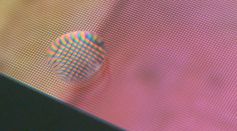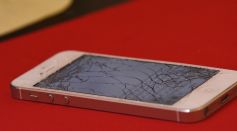NANOTECHNOLOGY

Novel Approach on Imaging by Combining Two Distinct Microscopy Technology Cells Show How Cells Work
Quantum Simulation: How Does It Help Single Molecules Survive Different Temperatures, Stabilize Unique Nanostructure?

Cooler Than Cotton: Research Team Develops Modified Silk Cloth That Keeps Temperature Cool Even Under Direct Sunlight
Fluorescent Nanomaterials Given an Eco-Friendly ‘Glow Up’ in a New Study
Color-Changing Indicator Combining Two Compounds Within Nanoparticles Predict Looming Algal Bloom
Long-Lasting Hydrogel Could Help Replace Breakage in Human Tissues; Link of This Water-Absorbing Material to the Approach Explained

Blue Phase Liquid Crystals Made Stable for Better Functions and New Optical Technologies
2D Boron Monosulfide Nanosheets: First Time for Researchers to Develop this Nanotech Mechanism for More Efficient Batteries, Electronic Devices

Nanocrystal-Glass Composites: Researchers Develop New Innovation That Can Produce ‘Unbreakable’ Screen in Devices
Carbon Nanotubes: Novel Sensor That Can Detect SARS-CoV-2 Developed; Results in Just a Few Minutes
Thermoelectric Devices Used to Apply New Approach That Controls Heat Flow, Generates Electricity at Nanoscale

Power Generator That Mimics Seaweed Movement Developed for Harvesting Static Energy from Ocean Waves
Nanotech Solution: Research Unveils How Edgy Light on Graphene May Lead to Single Route of Information
Nanotwinned Titanium: New Nanotech Approach for More Sustainable Manufacturing, Simpler Atom Movement
Most Popular

Will Earth's Magnetic Poles Flip Next? Magnetic Pole Reversal Explained Through Cutting‑Edge Magnetosphere Science

Relativity Time Dilation Explained: The Physics of Time and Why It Moves Differently in Space

How Lightning Science Reveals Why Charged Storms Are Rising with Global Warming Effects

How AI Is Used in Weather Prediction: Smarter Forecasting Through Machine Learning





